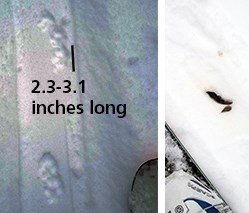
CGFW, Pete Figura (right); NPS, Jay Powers One of the Rarest Mammals in CaliforniaAlthough once found throughout the Sierra Nevada and Southern Cascade mountain ranges, the Sierra Nevada red fox (SNRF) is now one of the rarest mammals in California. The subspecies' abundance and distribution had declined dramatically in the last century. Today, the only known populations reside in Lassen Volcanic National Park and the surrounding Lassen National Forest (known as the Lassen area) and Sonora Pass area, near Yosemite National Park. Success in current survey efforts may provide our best opportunity for understanding and fostering Lassen's native red fox. Learn more about current research. Sierra Nevada Red Fox FeaturesThe Sierra Nevada red fox (Vulpes vulpes necator) is a member of the canid (dog) family that is found only in the Sierra Nevada and Southern Cascade mountains in California. This subspecies of red fox has genetic roots reaching back to the ice age. 

Report a Red Fox SightingYou can help further research on the distribution of the Sierra Nevada Red Fox. If you observe a red fox in the Sierra Nevada, Southern Cascade, or Klamath mountain ranges above 2,500 elevation, please report your observation by providing:
|
Last updated: April 30, 2020
